Did unexpected equipment problems ever stop a drilling operation? I have experienced it and it's a big problem!
Drilling tools often fail because of bit wear and breakage. Rod bending is another reason for failure. Thread damage and shank adapter issues also occur. Overheating poses a problem as well. These issues disrupt operations. Costs may rise if not addressed quickly.
I remember a time when the team worked on a very tough site. Drill bits wore out faster than normal. This situation cost us time and money. We learned that selecting the correct bit for the rock was vital. The right choice reduced wear. Bent rods and damaged threads caused frustration. They turned connecting and disconnecting into a hassle. Specific job conditions matter a lot. Wise consumable choices save trouble. Regular checks and maintenance help prevent failures. They keep things running smoothly.
Bit wear is the most common failure in drilling consumables.True
Bit wear occurs frequently due to constant contact with hard materials.
Overheating in drilling tools is caused by insufficient lubrication.True
Lack of proper lubrication increases friction, leading to overheating.
How does bit wear affect drilling efficiency?
Have you ever felt frustration when you slow down right as you are gaining speed? Drilling operations experience this when bit wear starts to occur.
Bit wear reduces drilling efficiency. It slows down penetration and requires frequent replacements. These issues increase costs and extend project timelines. Productivity suffers greatly.

Types of Bit Wear
Understanding different types of bit wear is key to running drilling operations smoothly. Abrasive wear is like driving on a gravel road. It creates constant friction and is hard on tires. In drilling, this wear occurs in hard rock and slows progress, increasing costs. Bits made from harder materials or with special coatings really help.
Another issue is breakage. Remember that time an old drill was pushed too hard? The bit snapped and everything stopped for a replacement. This type of wear happens when wrong bits are used for the geological conditions.
| Type of Wear | Impact | Mitigation Strategies |
|---|---|---|
| Abrasive | Slower penetration | Use harder materials |
| Breakage | Operational delays | Proper handling |
Impact on Drilling Efficiency
Bit wear reduces drilling efficiency. Dull bits cut like a butter knife on steak - more effort, less result. The penetration rate declines, project times increase, and so do costs. Replacing a bit means downtime, disrupting work. It's like stopping every few miles on a road trip to fix blown tires.
Moreover, frequent bit replacements lead to increased downtime, further affecting productivity. Each replacement involves halting operations, retrieving the drill string, and installing a new bit. This process not only adds time but also incurs additional labor costs.
Mitigating Bit Wear
To fight bit wear, high-quality bits are chosen for specific geological reasons. Regular maintenance checks discover wear patterns early and prevent inefficiency.
Implementing advanced drilling technologies1 can enhance performance by optimizing parameters such as rotation speed and pressure, which reduces wear and extends bit life.
Training all personnel is crucial; proper handling of equipment avoids early wear due to mistakes. Access to good resources helps the team follow best practices for bit care.
Importance of Material Selection
Selecting the right material for drill bits is vital for managing wear; it boosts efficiency. Materials such as tungsten carbide perform well in abrasive environments.
Incorporating advanced material technologies2 has significantly increased the lifespan and performance of drill bits.
Understanding the link between bit wear and drilling efficiency helps in choosing equipment wisely. It also guides maintenance practices which lead to optimal performance and cost savings.
Abrasive wear is common in soft rock formations.False
Abrasive wear typically occurs in hard rock formations, not soft ones.
Breakage of bits leads to operational delays.True
Bit breakage requires replacements, causing operational delays.
Why Do Rods Bend and How Can You Stop It?
I still remember the first time I saw a bent rod. It was a complete surprise. Not a pleasant one. Memories of it are still vivid. This event sparked thoughts in my mind. These thoughts revolved around avoiding this issue in the future.
Rod bending often occurs because of too much weight, poor alignment or material fatigue. Regular inspections are necessary to stop this. Careful maintenance is key. Selecting the correct materials for the task is also crucial. Very important indeed.
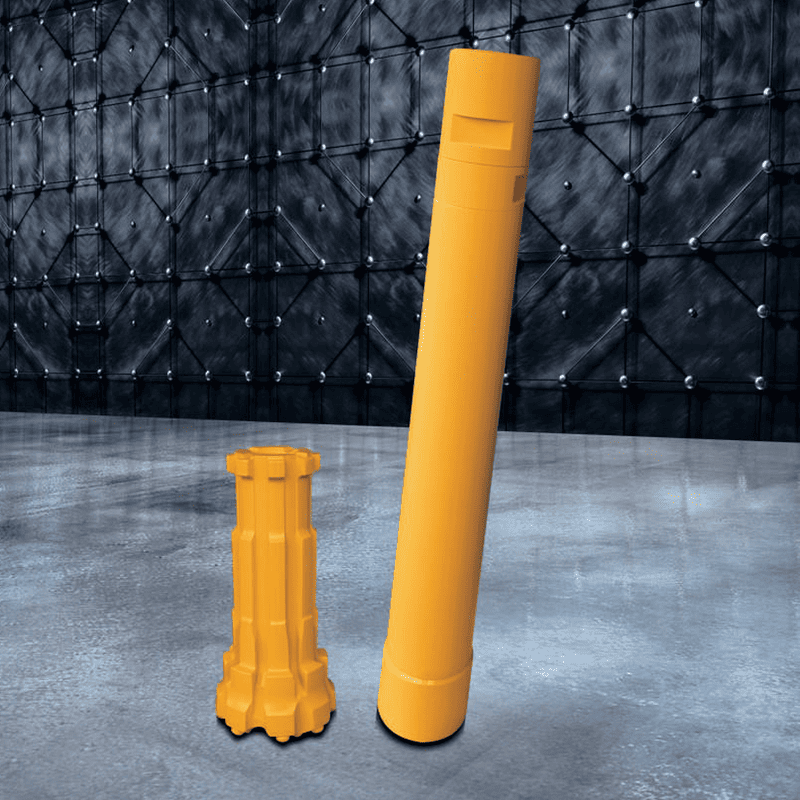
Understanding Rod Bending
One day, I entered the workshop and saw a rod twisted like a pretzel. The reason? Too much pressure. Rod bending occurs when a rod experiences more stress than it withstands. Extra weight, misalignment during setup, or wear and tear over time might cause this. In systems like hydraulic cylinders and engine rods, strength and alignment are very important.
Common Causes of Rod Bending
-
Excessive Load: I’ve observed rods bend when carrying too much weight. This usually happens when machines are really overworked. Learn more about excessive load3.
-
Improper Alignment: Misaligned rods experience uneven stress. This leads to bending, like trying to walk with one shoe on and one shoe off.
-
Material Fatigue: Materials slowly wear out over time. Using tough materials for rods really helps prevent this.
| Cause | Example Scenario | Solution |
|---|---|---|
| Excessive Load | Overloading machinery | Use load limiters |
| Improper Alignment | Misalignment during setup | Regular checks |
| Material Fatigue | Long-term use in high-stress environments | High-strength materials |
Preventing Rod Bending
-
Regular Inspections: I check equipment regularly. Finding problems early probably avoids many troubles later.
-
Proper Maintenance: Good condition equipment needs lubrication, adjusted settings, and replaced parts when necessary.
-
Material Selection: Choosing suitable materials really matters for rod use. Stainless steel is excellent in corrosive areas.
Learning how material choices affect rod strength might be useful. Look into material properties4 for specific uses. It’s definitely worthwhile if durable rods are essential for you.
Excessive load is a common cause of rod bending.True
Rods bend when subjected to loads beyond their design capacity.
Material fatigue cannot be prevented by maintenance.False
Regular maintenance helps detect and address material fatigue early.
Why Is Thread Damage a Major Concern in Drilling Operations?
Imagine the chaos and frustration when an important piece of drilling equipment breaks because of thread damage. This problem is preventable. It’s not just a technical hiccup. This issue is a costly setback.
Thread damage in drilling operations is a big worry. Equipment may fail. Downtime may increase. Maintenance costs rise. Regular inspection is important. Proper handling of drilling tools is necessary.
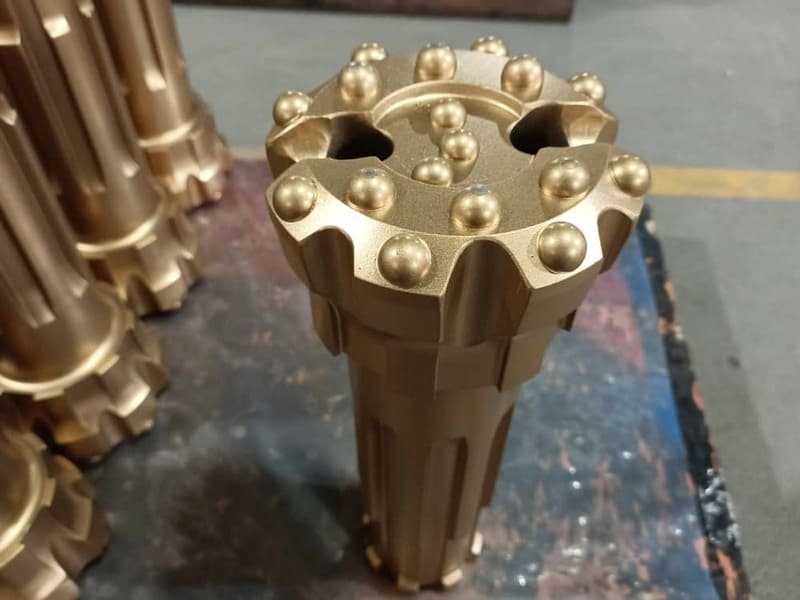
The Impact of Thread Damage on Drilling Operations
Imagine those tough days when everything seems to go wrong. I had one of those during a big drilling project. We were under pressure and the whole crew was waiting for results. Suddenly, everything stopped because of thread damage. It felt like watching dominoes fall one after the other. Threads hold our drilling parts like rods and shank adapters together. They are the unsung heroes of our work. When these threads have problems, it's more than just a small issue.
| Impact of Thread Damage | Consequences |
|---|---|
| Equipment Failure | Leads to operational downtime and repair costs |
| Safety Risks | Increases risk of accidents during operations |
| Cost Implications | Elevates maintenance and replacement expenses |
Damaged threads lead to equipment failure5. Repairs or replacements often cost a lot and cause delays no one wants.
Causes of Thread Damage
Surprisingly, many things contribute to thread damage:
- Wear and Tear: Continuous usage weakens the threads, especially in rough conditions, leading to natural degradation.
- Improper Handling: Mishandling equipment can cause misalignment and forceful engagements, resulting in thread wear6.
- Inadequate Lubrication: It's like driving a car without oil; friction increases, exacerbating wear.
Imagine tired workers trying to force equipment into place after long hours—misalignments invite thread wear.
Preventative Measures for Thread Damage
I learned that a little prevention is very valuable:
- Regular Inspections: Conducting frequent inspections allows early detection of wear before it becomes a disaster.
- Proper Handling Practices: Training my team on correct assembly techniques has helped reduce improper engagements.
- Use of Protective Coatings: Applying protective coatings7 adds durability against corrosive elements.
Following these measures extends the life of our equipment. Operational efficiency and safety improve together. It's useful to review these practices now and then to handle new challenges—revisiting them helps.
Thread damage causes equipment failure in drilling.True
Damaged threads can lead to equipment malfunction, halting operations.
Improper handling reduces thread lifespan.True
Incorrect handling can misalign threads, increasing wear and tear.
How Do I Prevent Overheating in Drilling Consumables?
Have you ever been working on a drilling project when everything unexpectedly becomes very hot?
I stop drilling tools from getting too hot with good cooling systems. I choose the right materials. I adjust drilling settings properly. Regular checks really keep everything working nicely. Maintenance keeps the process efficient. Everything runs smoothly this way.
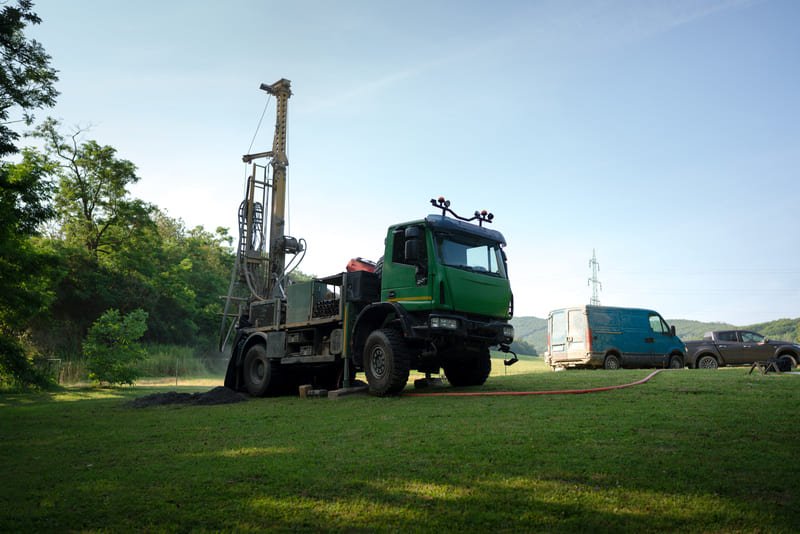
Understanding Overheating in Drilling Tools
Overheating occurs due to excessive friction between the drill bit or rod and the material being drilled. I recall a really hot summer day when our drill bits overheated during a project. The friction felt intense, and every degree increase seemed to raise the tension. Overheating is more than just a small issue; it quickly wears down equipment and stops work. Monitoring temperature levels during operations is essential to avoid these problems.
Cooling Systems Usage
On that hot day, we understood the value of a strong cooling system. We chose water cooling, which kept the temperature down and lubricated the parts. Air mist systems work very well when water isn't an option. Every cooling method has benefits and limits, as shown below:
| Cooling Method | Advantages | Disadvantages |
|---|---|---|
| Water Cooling | Efficient heat removal, improves lubrication | Requires water access, can lead to corrosion |
| Air Mist Systems | No corrosion, suitable for dry conditions | Less efficient than water, may require more energy |
We learned this through trying different approaches.
Improving Drilling Settings
I often adjust rotation speed and penetration rate to control heat. Slowing down might seem like a wrong choice; however, it cuts friction significantly. Finding the right balance is very important—it's like tuning an instrument perfectly. Ensuring proper flushing of cuttings helps maintain optimal performance and reduces heat buildup.
Choosing and Caring for Materials
I discovered early on the importance of using the right materials for your drill bits and rods based on geological conditions. Tungsten carbide helped a lot in withstanding high temperatures due to its durability and resistance to high temperatures. Regular upkeep checks keep these materials in very good condition, preventing unpleasant surprises.
Consider implementing routine maintenance schedules8 to ensure consumables are free from defects that can exacerbate overheating issues.
Modern Monitoring Techniques
Using advanced monitoring systems felt like gaining a superpower—they provide real-time feedback on temperature and other critical parameters, enabling quick changes before overheating becomes a problem. IoT devices improved this ability by facilitating remote monitoring, providing peace of mind even when I am not on-site.
By integrating these strategies into my routine, I have kept overheating under control. My drilling tools last longer and work better—it’s really about working smarter.
Water cooling prevents corrosion in drilling.False
Water cooling can cause corrosion if not managed properly.
Slower rotation speeds reduce drill bit overheating.True
Lower speeds decrease friction, reducing heat generation.
How Does Material Selection Impact Consumable Longevity?
Have you ever thought about why certain tools endure for a long time while others hardly last a season?
Choosing materials is very important for extending the life of products we use up. Right materials increase strength and lower failure rates. This helps operations run better and cuts down on stops.
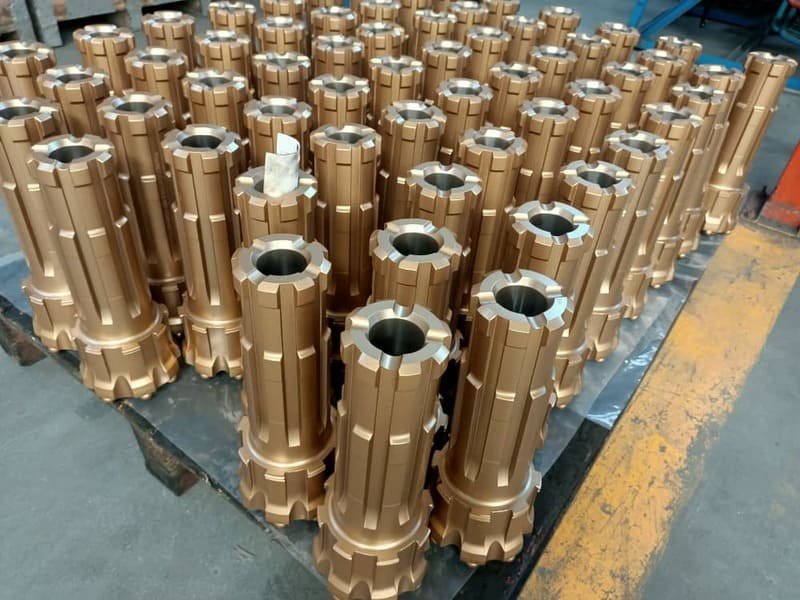
Understanding Material Properties
The characteristics of materials can be really fascinating. Properties like hardness, toughness, and how they resist corrosion9 determine if they last long. I learned this lesson the hard way. Drill rods not suited for corrosive environments failed too soon. Switching to stainless steel, which resisted rust wonderfully, improved results noticeably.
Table 1: Material Properties and Their Impact
| Material | Hardness | Toughness | Corrosion Resistance |
|---|---|---|---|
| Tungsten Carbide | High | Moderate | Low |
| Stainless Steel | Medium | High | High |
| Alloy Steel | Medium | High | Medium |
Matching Materials to Applications
Matching the right material to its task resembles finding perfect running shoes for a marathon. Running in flip-flops sounds silly, right? In corrosive environments, stainless steel often really performs well. For abrasive surfaces, carbide is often the better choice.
Importance of Abrasion Resistance
Industries like mining and drilling work with abrasive materials all the time. Abrasion resistance really matters. Choosing materials with high abrasion resistance truly cuts replacement costs and increases efficiency.
Consideration of Fatigue Strength
Repeated stress weakens even the strongest materials with time. High fatigue strength is crucial. Certain alloy steels10 have this quality. Our shank adapters failed constantly until we switched materials. After that, downtime dropped significantly.
Economic Implications of Material Choices
Balancing cost with durability takes skill. High-performance materials like tungsten carbide may seem pricey at first. But their longer life reduces downtime and replacement needs. This realization has been valuable in many budget meetings.
Table 2: Cost vs. Longevity Trade-off
| Material | Initial Cost | Longevity | Total Cost Over Time |
|---|---|---|---|
| Tungsten Carbide | High | Long | Low |
| Stainless Steel | Medium | Medium | Medium |
| Alloy Steel | Low | Short | High |
Selecting materials strategically involves more than choosing the cheapest option. It's about balancing cost and performance for each task. This approach has optimized operations and really improved the efficiency of our consumables.
Tungsten carbide has high corrosion resistance.False
Tungsten carbide has low corrosion resistance, making it unsuitable for corrosive environments.
Stainless steel is preferred for its rust resistance.True
Stainless steel offers high corrosion resistance, ideal for environments prone to rust.
How Do Operational Factors Affect Consumable Failures?
Have you ever thought about why some tools don't last long? It is probably more about how we use them than their materials.
Improper handling of equipment, lack of maintenance and wrong material choices often cause failures in consumables. These failures increase downtime and costs. Regular monitoring is very important. Thorough training is crucial.
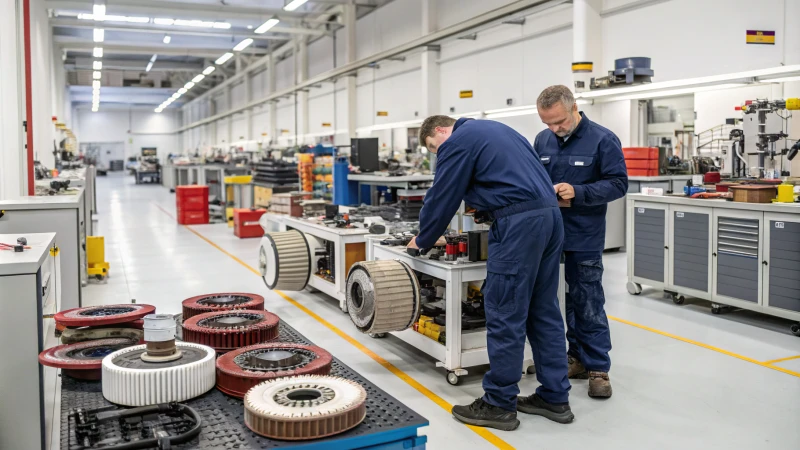
Equipment Misuse and Overloading
Operational practices often lead to misuse of equipment, resulting in consumable failures. For instance, using a bike to carry a truckload is a good example - it might go for a bit, but it ends poorly. It's crucial to follow manufacturer guidelines on usage limits.
| Factor | Impact |
|---|---|
| Excessive Force | Breakage and wear |
| Inadequate Training | Improper handling and application |
| Lack of Supervision | Unmonitored equipment stress |
Insufficient Maintenance Practices
Skipping maintenance checks seems to save time, but it causes bigger troubles later. Avoiding regular inspections is like ignoring your car's oil change. Regular inspections help in identifying early signs of wear and tear11. Moreover, predictive maintenance technologies can forecast potential failures.
- Scheduled Checks: Routine inspections catch issues early.
- Technology Utilization: Use diagnostic tools for predictive insights12.
Material Selection and Compatibility
Using the wrong drill bit wears it out really fast. This frustrates many. Using incompatible materials is a common mistake. Evaluating geological conditions13 before choosing materials ensures they last longer.
- Geological Matching: Match materials with terrain characteristics.
- Supplier Consultation: Consult suppliers for suitability guidance.
Operator Training and Awareness
Training seems to take time away from real work, but it is worth every minute. Well-trained operators handle equipment effectively, reducing mishandling risks which leads to wear and damage. Implementing comprehensive training programs14 enhances operational efficiency.
- Training Programs: Regular updates teach equipment handling.
- Awareness Campaigns: Stress the importance of proper usage.
Operational Environment Conditions
We might not control our work environment, but understanding it helps significantly. Extreme temperatures or dusty places shorten a tool's life. Ensuring that operational parameters align with environmental conditions can mitigate these impacts. Consideration of climatic influences15 is essential during operation planning.
- Climate Control: Maintain ideal working conditions.
- Dust Management: Systems reduce dust exposure.
Navigating these factors needs a varied approach to extend consumable lifespan. Each factor, from training thoroughly to controlling environments, plays a role in minimizing failures, thereby optimizing productivity and cost-efficiency in industrial operations.
Excessive force causes consumable breakage.True
Using excessive force during operation leads to breakage and wear.
Incompatible materials extend consumable life.False
Incompatible materials cause rapid wear, reducing consumable lifespan.
Conclusion
Common failures of drilling consumables include bit wear, rod bending, thread damage, and overheating. Proper material selection and maintenance are crucial to minimize downtime and operational costs.
-
Explore technologies that optimize drilling parameters to extend bit life and improve efficiency. ↩
-
Learn about materials like tungsten carbide that enhance bit durability in harsh conditions. ↩
-
Explore how excessive loading can lead to mechanical failures and what preventive measures exist. ↩
-
Understand how choosing the right material enhances rod performance in various environments. ↩
-
Explore how thread damage directly contributes to equipment failure and operational downtime. ↩
-
Discover recommended practices to prevent thread wear, ensuring long-lasting equipment performance. ↩
-
Learn about protective coatings that can enhance thread durability against wear and corrosion. ↩
-
Implementing effective maintenance schedules helps prevent overheating by ensuring equipment is always in optimal condition. ↩
-
Understanding corrosion resistance helps in selecting materials that minimize wear and extend product life in harsh environments. ↩
-
Alloy steel offers enhanced fatigue strength, essential for durable manufacturing components. ↩
-
Discover why regular maintenance is crucial for industrial equipment longevity and performance. ↩
-
Explore the advantages of predictive maintenance technologies in preventing equipment failures. ↩
-
Understand how geological conditions influence material selection for drilling operations. ↩
-
Find out how effective training programs can enhance operator proficiency and reduce equipment failures. ↩
-
Learn about the effects of environmental conditions on equipment performance and how to manage them. ↩








